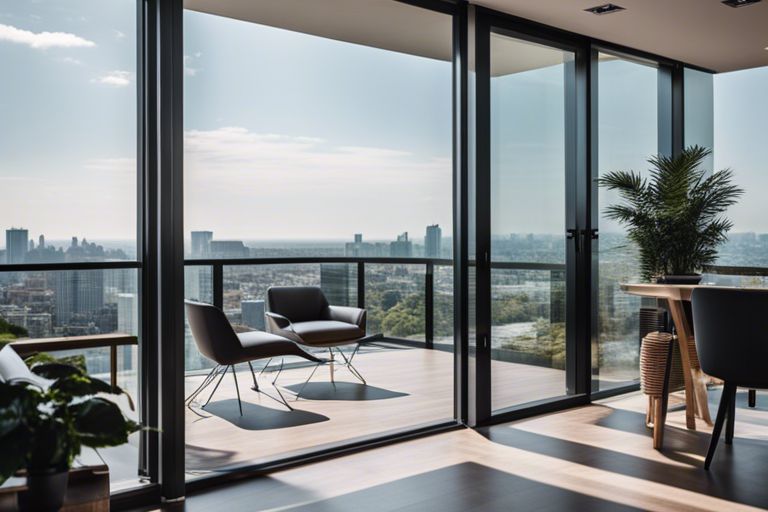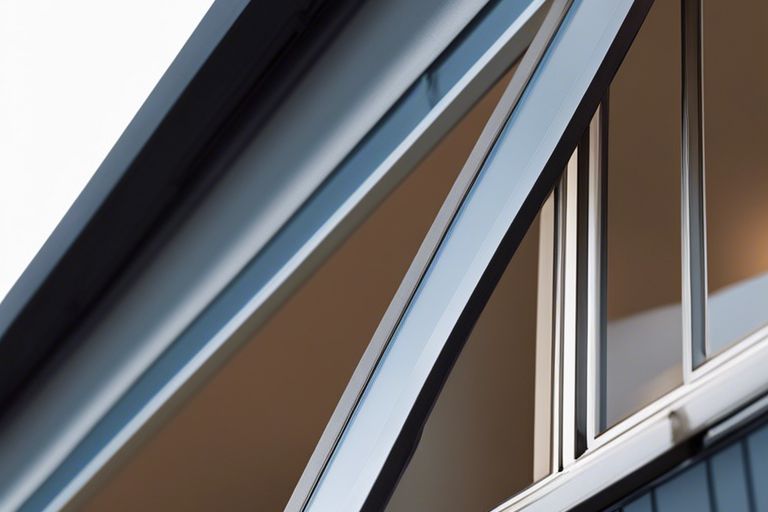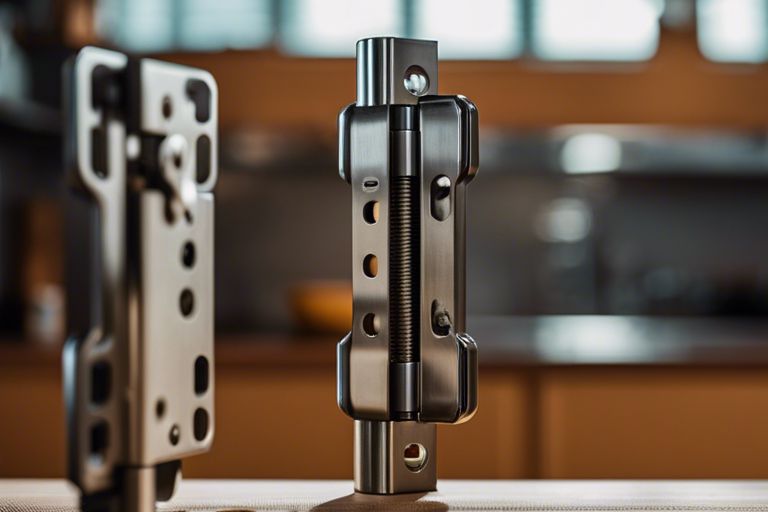In the realm of architecture and construction, curtain walling plays a vital role in modern building design. This innovative technology not only enhances the aesthetic appeal of structures but also improves energy efficiency and structural integrity. Advancements in building materials and construction techniques have led to more durable and sustainable curtain wall systems. However, with these advancements come challenges such as climate change resilience and fire safety standards that must be addressed to ensure the safety and longevity of buildings. In this blog post, we will explore how innovative technologies are pushing the boundaries of curtain walling, from smart glass to parametric design tools, revolutionising the way we think about architectural facades.
Key Takeaways:
- Enhanced Energy Efficiency: Innovative technologies in curtain walling improve insulating properties, reducing energy consumption and carbon footprint.
- Increased Design Flexibility: Advancements allow for more creative and complex designs, meeting varied architectural requirements and aesthetic preferences.
- Enhanced Performance and Durability: Incorporating technologies such as improved weather resistance and acoustic insulation enhances the overall performance and lifespan of curtain wall systems.

Cutting-Edge Materials in Curtain Wall Systems
High-Performance Glass Developments
In the realm of curtain wall systems, high-performance glass is revolutionising the way buildings are designed and constructed. Advanced coatings and technologies enable glass to achieve impressive feats, such as improved thermal efficiency, solar control, and acoustic insulation. Architects and designers now have a wide array of glass options at their disposal, allowing them to create visually stunning facades while meeting the stringent requirements for energy efficiency and occupant comfort.
Furthermore, innovations in glass manufacturing processes have led to the production of larger glass panels that offer unobstructed views and increased natural light penetration. These developments not only enhance the aesthetic appeal of buildings but also contribute to sustainable design practices by maximising natural daylight and reducing the overall energy consumption of the structure.
Integration of Composite Materials and Metals
Another area of advancement in curtain wall systems is the integration of composite materials and metals. By combining the strength and durability of materials like aluminium with the versatility and design freedom offered by composites, manufacturers are able to create curtain wall systems that are both visually striking and structurally efficient. These hybrid systems are capable of withstanding extreme weather conditions and provide an extra layer of protection against potential risks.
The use of composite materials in curtain wall systems also allows for greater flexibility in design, as they can be moulded into complex shapes and profiles that would be difficult to achieve with traditional materials alone. This opens up a world of possibilities for architects to explore innovative and creative facade designs that push the boundaries of conventional construction methods.
Furthermore, the integration of composite materials and metals in curtain wall systems not only enhances the aesthetic appeal of buildings but also improves their resilience and longevity against environmental factors. This combination of materials ensures that the curtain wall system not only looks impressive but also performs exceptionally well in terms of both functionality and durability.
Intelligent Facades and Automation
Smart Glass and Dynamic Glazing
In the realm of intelligent facades, smart glass and dynamic glazing have revolutionised the concept of curtain walling. Smart glass is equipped with special coatings that allow it to change its tint and transparency in response to external factors such as sunlight and temperature. This innovation not only enhances energy efficiency by regulating light and heat entering a building, but also provides occupants with greater control over their environment.
Dynamic glazing goes a step further by actively adjusting its properties in real-time. This technology can improve thermal comfort within a building by minimising glare and heat gain, while maximising natural light penetration. Its adaptive capabilities make it an invaluable addition to modern curtain wall systems, offering a dynamic solution to the challenges of maintaining indoor comfort and energy efficiency.
Automation in Installation and Maintenance
Automation plays a crucial role in the installation and maintenance of curtain wall systems. From robotic assembly to remote monitoring sensors, automation streamlines processes and enhances the precision and efficiency of curtain wall installation. This not only accelerates project timelines but also ensures consistency and quality in the assembly of complex facade systems.
Furthermore, automation in maintenance is transforming the way building facades are cared for. Integrated self-diagnostic sensors can detect issues in real-time, enabling proactive maintenance to prevent potential failures. With automated cleaning systems becoming more prevalent, the upkeep of curtain walls is not only simpler but also safer, reducing the need for manual interventions at heights.
The integration of automation in installation and maintenance provides cost-effective solutions for building owners, enhancing the longevity and performance of curtain wall systems in the long run.

Energy Efficiency and Sustainability
Energy efficiency and sustainability are key considerations in modern architectural design, and curtain walling plays a crucial role in achieving these goals. With the integration of innovative technologies, curtain walls can now offer improved energy performance, reducing the carbon footprint of buildings while enhancing occupant comfort.
Solar Control and Thermal Insulation Techniques
Solar control and thermal insulation techniques are essential for maximising energy efficiency in buildings. Advanced coatings on glass panels can reduce glare and heat gain, allowing natural light to enter the building while minimising the need for artificial lighting and cooling systems. Additionally, innovative thermal break technology helps in reducing heat transfer through curtain walling systems, improving insulation and overall energy efficiency.
The use of high-performance glass with low-emissivity coatings can further enhance the thermal insulation properties of curtain walls, helping to maintain a comfortable indoor environment and reduce energy consumption. By incorporating these techniques, architects and developers can create sustainable buildings that significantly decrease their environmental impact over the long term.
Curtain Walls and Building Energy Management Systems
Curtain walls can be integrated with building energy management systems (BEMS) to optimise energy usage and enhance sustainability. By connecting curtain walling technologies to BEMS, it is possible to monitor and control factors such as lighting, heating, and cooling based on real-time data, improving energy efficiency and overall building performance.
Through the integration of curtain walls with BEMS, building operators can make informed decisions to reduce energy consumption, lower operating costs, and minimise environmental impact. This collaborative approach to energy management empowers architects and developers to create buildings that not only look impressive but also prioritise sustainability in their design and operation.

Advanced Design and Modeling
In this chapter, we will explore the realm of advanced design and modelling in the context of curtain walling. The incorporation of innovative technologies has revolutionised the way architects and designers approach the creation and implementation of curtain walls. This has led to enhanced efficiency, precision, and aesthetics in the field of architectural facades.
- 3D Modelling and Digital Fabrication
| Advantages | Considerations |
| Improved visualisation of complex designs | Potential errors in digital models |
| Enhanced communication between stakeholders | Accuracy of fabrication machines |
3D Modeling and Digital Fabrication
The utilisation of 3D modelling enables designers to visualise intricate structures in a virtual environment before physical creation. This technology has significantly enhanced the precision and intricacy achievable in curtain wall designs. Moreover, digital fabrication processes have streamlined production by translating digital models directly into manufacturing instructions, reducing human error and increasing efficiency in the construction process.
Parametric Design and Customisation in Curtain Walls
Parametric design techniques have unlocked a new realm of possibilities in curtain walling, allowing for intricate patterns, shapes, and configurations that were once unattainable. The ability to customise curtain walls based on specific project requirements has empowered architects to create unique and innovative facades that were previously limited by traditional design constraints.
Furthermore, parametric design not only offers enhanced aesthetic opportunities but also contributes to improved performance and sustainability. Through the manipulation of parameters, architects can optimise factors such as solar heat gain, natural light penetration, and overall energy efficiency, resulting in curtain walls that are both visually striking and environmentally responsible.
Safety and Performance Standards
When it comes to advancing curtain walling technologies, ensuring safety and meeting performance standards are paramount. Innovations in this field have focused on enhancing structural integrity, as well as ensuring compliance with global building standards.
Improvements in Structural Safety
One of the key advancements in curtain walling technology is the implementation of advanced materials such as high-strength aluminium alloys and innovative glass compositions. These materials offer enhanced durability and structural stability, making curtain walls more resilient to external forces such as wind loads and seismic activity.
Additionally, the integration of state-of-the-art design software allows for meticulous analysis and testing of curtain wall systems, ensuring that they meet and exceed safety requirements. These technological advancements have significantly reduced the risk of structural failures and have led to improved overall performance of curtain walling systems.
Compliance with Global Building Standards
Adhering to global building standards is essential in the development and implementation of curtain walling systems. By conforming to international regulations and guidelines such as ISO 9001 and ASTM International standards, manufacturers can guarantee the quality and performance of their products on a global scale.
Furthermore, compliance with local building codes ensures that curtain wall systems are installed and maintained according to regional safety requirements, providing peace of mind to building owners and occupants.
Advancing Curtain Walling with Innovative Technologies
In the end, the incorporation of innovative technologies in curtain walling systems is revolutionising the construction industry. From energy-efficient glass to smart facades with integrated sensors, these advancements enhance the functionality and sustainability of buildings. As technology continues to advance, we can expect even more cutting-edge solutions that improve the performance and aesthetics of curtain walling. Embracing these innovations will not only elevate the overall efficiency of buildings but also contribute to a more environmentally friendly and visually striking urban landscape. It is evident that the future of curtain walling lies in the seamless integration of technology to create structures that are both functional and visually appealing.
FAQ
Q: What are the benefits of advancing curtain walling with innovative technologies?
A: Advancing curtain walling with innovative technologies offers increased energy efficiency, enhanced design possibilities, improved structural performance, and streamlined installation processes.
Q: How do innovative technologies improve the sustainability of curtain wall systems?
A: Innovative technologies such as photovoltaic panels, intelligent shading systems, and advanced thermal breaks help enhance the sustainability of curtain wall systems by reducing energy consumption, minimising heat loss, and promoting green building practices.
Q: What role do digital tools play in the development of curtain walling systems?
A: Digital tools such as Building Information Modelling (BIM), Computational Design, and Virtual Reality (VR) simulations are instrumental in enabling precise planning, detailed visualisation, and efficient coordination in the design and construction of advanced curtain walling systems.






